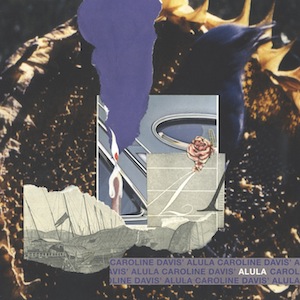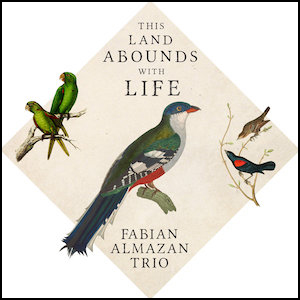Label: Big Ego Records, 2019
Personnel - Jeff Parker: guitar; Cathlene Pineda: piano; Anthony Shadduck: bass; Dylan Ryan: drums + Double Quartet with Alex Sadnik: woodwinds; Phillip Greenlief: woodwinds; Kris Tiner: brass; Danny Levin: brass; David Tranchina: bass; Anthony Shadduck: bass; Danny Frankel: drums; Chad Taylor: drums.
Deserving more exposition, bassist Anthony Shadduck emerges on the scene with a fresh compositional vision that encompasses both restrained and boisterous forces. The Long Beach-based musician stamps his recently recorded album, Quartet & Double Quartet, with several idioms commanded with courage and accuracy.
The first side of the record includes three laid-back covers and one original, disclosing a mellifluous quartet harmonically driven by guitarist Jeff Parker and pianist Cathlene Pineda and rhythmically consolidated with drummer Dylan Ryan.
The disc begins with Ornette Coleman’s “Law Years” from his acclaimed 1972 album Science Fiction. Shadduck’s crisp bass notes introduce the theme, which acquires extra density when guitar and piano join in accordance. The musing tone is also tactfully bluesy, and there’s a jazz-folk component in the sound of Parker that makes the tune extremely attractive. Pineda’s comping is methodical and her enveloping solo brings a hint of enigmatic streak, while the bandleader sculpts a pensive dissertation prior to the end.
The narrative of “The Story of Maryam” is inducted with gleaming guitar drones, rattling noises, loose piano, and a bass pedal within a suspended atmosphere that disembogues in a gentle and airy triple-metered stream that evokes the song’s author, Paul Motian. The original pace is maintained and the catchy balladic enunciations that compose its backbone are jazzified by improvisations from bass and guitar.
The engrossing piano-led melodies of Chris Schlarb’s “The Starry King Hears Laughter” get us immersed in a musical reverie that overflows with sincere, emotionally charged depictions. Parker is the one in control of the closing melodic statement.
Shadduck’s “Ozark’s Gift” settles down in the spacious atmosphere built on Ryan’s brushed activity and comes shrouded in blissful contemplation. Although delimited in dynamic range, strong emotions dwell in this thoughtfully developed song.
The extroverted second half of the album features two free-spirited compositions for a double quartet composed of drummers, brass/ woodwind players, and bassists who navigate through pizzicato lines and bowed garnishes. “One” finds the percussionists excavating an invigorating Afro-centric jazz dance with shades of Brazilian in an advanced rhythmic aesthetic emphasized by the spiky lines exchanged by the horn players. If this precise drumming effort takes us into a highly addictive ride, “Two” shows a deep understanding of the importance of ostinato-based grooves, which is palpable and contagious. Peacefully introduced by bass, this piece reminds the swinging free-style orchestrations of Charles Mingus, decorated with indomitable tenacity, smart horn fills, enlivening interaction, and, of course, individual creativity.
Showing know-how in two different contexts, Shadduck pops up among the notable talents of a new breed of jazz players.
Grade A-
Favorite Tracks:
03 - The Starry King Hears Laughter ► 05 - One ► 06 - Two








































